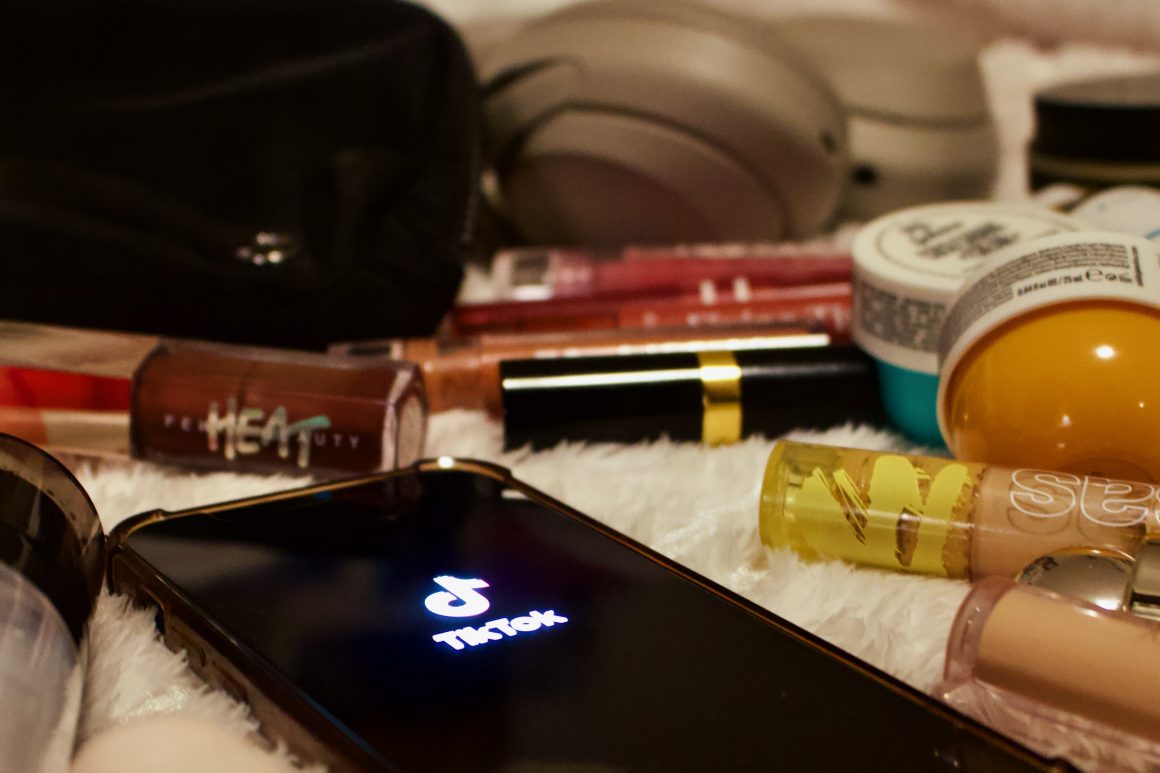
How TikTok promotes overconsumption
By Radhya Comar, February 28 2023—
Whether it was chunky rings, patchwork tops or cow print apparel, everyone on TikTok has at some point been influenced to make a purchase after watching a video recommending a trendy product. With many personalities on the app urging followers to act fast on certain deals and products, there is no doubt that TikTok is an effective tool in driving consumerism. Such content reinforces within us the mindset that we can never have enough. Although, many of the purchases which are subsequently made are wholly unnecessary.
In a poll conducted by shift, a London-based fashion site, 74 per cent of people aged 14-27 confirmed that they had felt pressured to purchase new clothes after watching haul videos and 66 per cent admitted to purchasing more clothing after joining TikTok. Still, the issue is a lot more complex than most realize. The materialistic environment created on TikTok stretches far beyond inspiring a few indulgent purchases here and there.
Of course, targeted marketing and micro trends — trends that vanish as rapidly as they gain popularity — are not new things. Thus, it is unfair to villainize TikTok creators as the sole promoters of overconsumption. It is more important to remind ourselves that these creators are trying to support themselves financially.
Brand deals and sponsorships are a significant part of their livelihoods. Smaller creators who do not have lucrative contracts with large brands will often purchase certain popular products to film reviews or get noticed by doing large clothing or beauty hauls. Through this method, they are able to quickly piggyback off of the fame of a viral product or company and amass views. For them, these needless purchases are seen as investments in order to expand their following. No matter how unusual it may seem for the latest fashion and beauty products to be considered investments, this allows the average person to understand that their spending habits do not need to align with the people whose content they consume.
Many people are able to make the distinction between an honest review and a sponsored advertisement with evident bias. However, most TikTok users are young and impressionable people between the ages of 18-24 who may lack the ability to do so. TikTok videos that encourage constantly purchasing new items not only drive overconsumption but also set a harmful standard for young people. Much of the content on the app entices people to purchase new clothes, beauty products, fitness equipment and home decor to achieve a certain aesthetic. Groupings like “E-boys” and “cottage-core girls” not only constrain one’s identity and creativity, but feed into the insecurity of not belonging to a certain group.
Furthermore, viral products such as the Dior lip oil and the Glow Recipe watermelon sleeping mask are on the pricier side. This bridge is instantly gapped by the thousands of videos recommending dupes and creators who have cultivated their fan base by providing tips on how to have “luxury on a budget.” Such creators mostly focus on testing “dupes” or cheaper alternatives for their followers. These dupes are often made with cheap, unsustainable materials and by companies with poor ethical practices. The most popular sites mentioned on TikTok for finding cheaper copies of luxury items are Shein. The latter of the two produces its garments mainly from sweatshops where female and even child workers are subject to 18-hour work days and paid only 2 cents per garment made. Even though there is little transparency about their environmental policy, Shein earned 10 billion dollars in 2020 making them one of the largest retailers in fashion. This industry contributes to 20 per cent of global wastewater and 10 per cent of carbon emissions.
Overall, it is impossible to stop social media from influencing what people buy and where they buy it from. Brands will continue to use social media to market their products. Influencers, who depend on brand deals to meet their financial needs, will also continue to make interactive content that drives consumption. As with many aspects of social media, it seems as though it is the audience’s responsibility to be more mindful of the content they consume and the extent to which it influences them. However, as previously mentioned, the majority of TikTok users are young people and therefore increasingly susceptible to the effects of marketed content.
Some argue for the app itself to do a better job at labelling sponsored content. Others call on TikTok personalities to be more transparent about their consumption. Yet, there is no one-size-fits-all solution to the overconsumption encouraged by TikTok.
This article is a part of our Opinions section and does not necessarily reflect the views of the Gauntlet editorial board.
